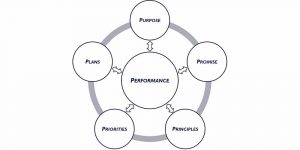Why groups are better at problem solving than individuals
Mental quick-sand for problem solving
Chris was frustrated. He’d devoted a few hours already to the piece he needed for the Board papers, due tomorrow. He felt stuck, as if he was in some kind of mental quick sand. The harder he tried to think creatively, the more he seemed to get sucked into ideas that weren’t leading anywhere!
Knowing that he had to deliver, he’d shut himself in his office. Do not disturb! This fortress would provide the solitude he needed. Unwittingly though, Chris had created a mental prison for himself. His self-imposed confinement was constraining rather than promoting his creative thinking.
Right now, it was people rather than solitude that would provide the inspiration he was seeking. He chastised himself for having wasted so much time before realising others might help. He quickly reached for the phone to ask a few key colleagues to join him.
The problem of perspective
The key problem that plagued Chris was perspective or ‘mental set’. No matter how hard he tried, he seemed trapped by his current paradigms. All avenues were leading him to the same, unacceptable outcomes. Yet, he wasn’t able to put himself on a fresh path that would lead to a different destination.
We’ve looked previously at how the brain prefers to find a single solution and, without exploring all options, pursues that alone. Professor Sydney Finklestein refers to this as ‘one plan at a time’ thinking. There is associated research which shows how, due to a variety of psychological mechanisms, we can become trapped by particular perspectives. We get into a particular frame of thinking and filter out alternatives that could help us break the impasse.
Only human
As amazing as our brains are, they are nevertheless subject to physical limitations. Complex problem solving requires a huge amount of brain power – which is why it can be so physically exhausting. Chris first needed to dredge his memory for information and then decide if it was relevant. To be creative, he had to formulate a number of different hypotheses and test them. Critically, he also needed to be alert to possible errors of inference. On any day this is challenging and having a deadline adds complications.
Power in numbers
Researchers from Grinnell College published a study on their research focusing on mental set and complex problem solving. The study has valuable insights for individual and group problem solving within organisations.
Firstly, evidence confirms that groups solve complex problems much more effectively than individuals. A key reason is shared cognitive load (e.g. retrieval, attention, hypothesis formulation and testing). Quite simply, the combined brain power that groups apply to a problem solving task is substantially greater than that applied by any individual.
Another important reason is the diversity of domain knowledge. More people have a broader range of knowledge and experience to draw from than any one individual. True, groups need to deal with the dynamics of working together, which obviously requires effort. But, once resolved, the positive benefits of the collective are a likely outcome.
The individual, on the other hand, remains ‘single brain’ constrained. Alone, individuals are unable to contrast their perspectives with others during problem solving processing. It is possible for domain knowledge to inhibit creativity. Individuals are also prone to ‘functional fixedness’ (can’t apply the same information in another format) and following the path of expectations (‘one plan at a time’ flaw). Finally, individuals are less likely to detect erroneous thinking because the brain effectively filters out data that doesn’t fit with a chosen explanation or solution!
In a group setting, it is much less likely that erroneous thinking will remain undetected. With multiple brains and different perspectives, errors of inference are more likely to be spotted. Sadly, the space shuttle disasters demonstrate that groups may not always choose to acknowledge flawed thinking.
How cues in the immediate environment can impact thinking
Importantly, the research also found that whole groups of people could be adversely affected by environmental cues – distracted by red-herrings. The research involved working through a puzzle about a poker game and a subsequent murder. Researchers gave a key clue of ‘53 bicycles’, referring to the ace that the victim had concealed up his sleeve. Cheating with an extra ‘bicycle’ playing card – the ace!
Groups were able to ask as many questions as they wanted, restricted only by ‘Yes’ or ‘No’ answers. When there was a bicycle in the room, either before or during the puzzle, groups took a lot longer to work out that the ‘53 bicycles’ clue referred to the deck of playing cards and not the vehicle. The same individual perspectives were initially limiting, adversely impacting group problem solving progress. However, collective processes led groups to recognise the fatal flaw and find the correct solution.
Outcomes are all too often impacted by problem solving that goes off the rails. We’ve listed a few key signs that could alert you that the group problem solving process isn’t going well.
PRACTICAL IDEAS TO APPLY IN YOUR BUSINESS
Recognising and then solving problems
It can take a while before teams recognise their problem solving has stalled- and this often makes things worse. Here are 7 signs from the research that you can watch out for.
- Individuals repeat solutions known to be incorrect. A sure sign that someone is stuck for alternative ideas!
- People revert back to restating the problem – even when there’s no doubt what it is. It can be useful to restate the problem early on for clarity, but after that rather look for solutions.
- The group ‘goes blank’, wondering aloud what the answer might be rather than presenting possible solutions. Time for a break.
- Individuals start guessing – their suggestions have no supporting evidence. It may help to reiterate that solutions must be evidence-based.
- People show signs of emotional frustration or stress. A fresh problem solving tool could help.
- The group becomes fixated on particular facts or perspectives. In this state the more remote plausible alternatives are ignored. A definite reminder to check diversity of perspectives.
- A final death knell for a possible solution occurs when the group gives up trying to solve the problem. To be avoided!



